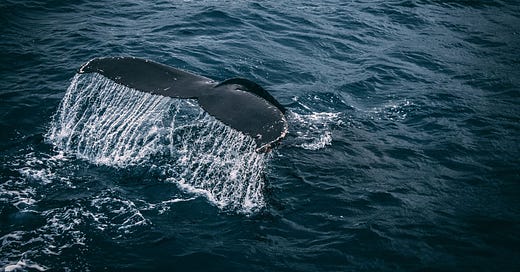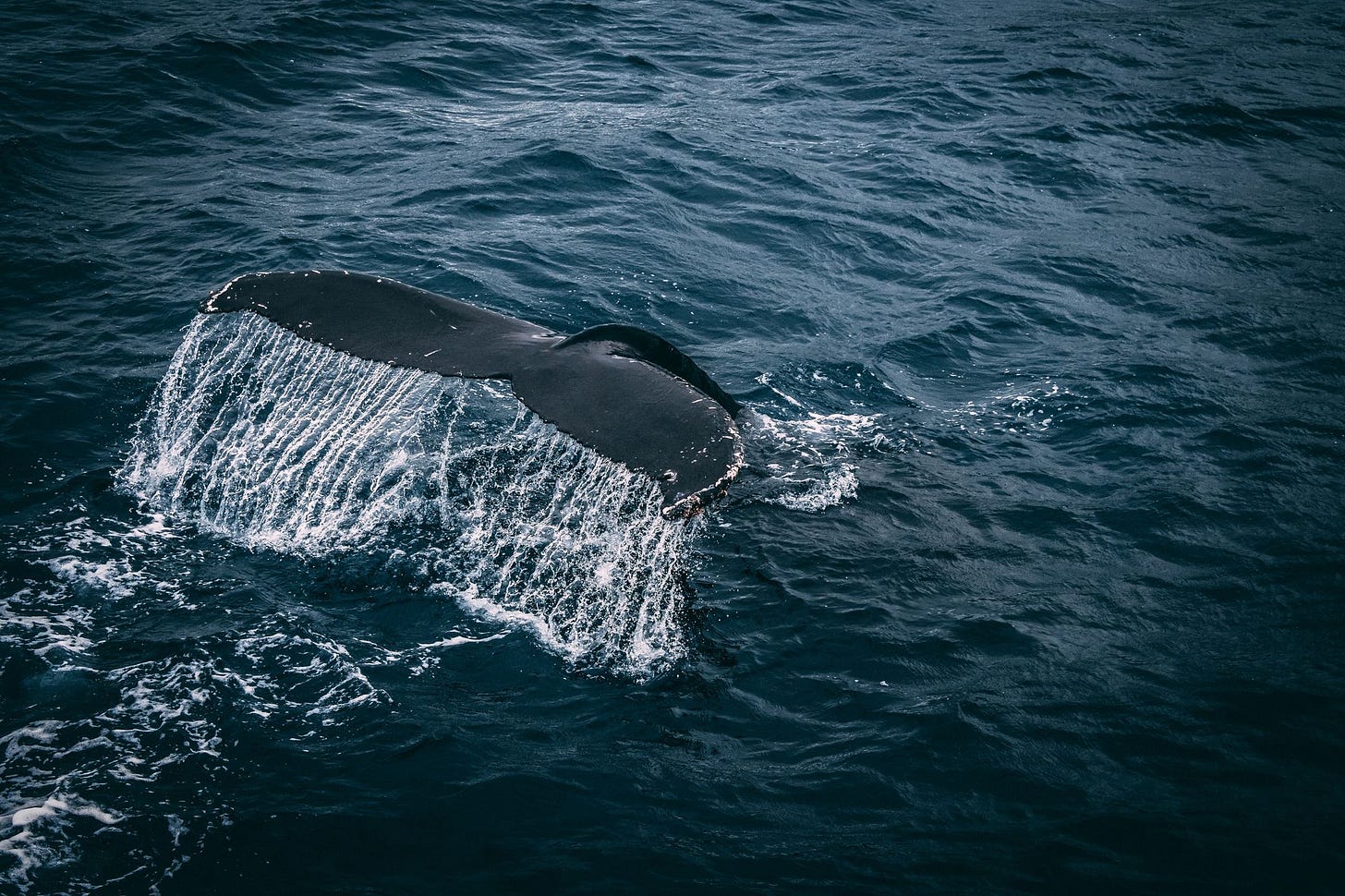I was working on a story for an outlet that likes to see unusual fantasy races, so I was doing a little bit of research about tails and what they're "for" from an evolutionary perspective, because I kind of hate it when fantasy creatures have random animal bits tacked on without any thought beyond "it would be cool if..."
Quick Facts
The breeze from a large mammal's tail swinging tail is enough to block half of the mosquitos in an area from landing. The tail itself makes a pretty decent fly swatter.
In most snake species, males have longer tails than females of the same body length. Males with longer tails relative to body length have longer copulatory organs, which are known as hemipenes.
Crocodiles use their tails as a fat reserve. So do beavers and skinks. It's a surprisingly common use of the appendage; cosmetic surgeons do something similar with the Brazilian Butt Lift. In a similar vein, this discussion about fat-tailed sheep is fascinating.
More animals have prehensile tails in South America than in Southeast Asia. That’s because forests are denser in South America. On the other hand, in less dense forests like those found in Southeast Asia have gliding animals mostly like flying snakes or colugos.
Seahorses are able to cling to a variety of materials, including coral, algae, seagrass, sponges, and even man-made items, thanks to their fully prehensile tails. Wnt8a is one of the relative genes that play crucial roles in the development of prehensile tail of the seahorse; it helps make it longer.
Underwater Propulsion
Fish and many other animals that live in the sea use tails for propulsion underwater, so it makes sense that mythical mermaids have tails instead of legs. It turns out that at least one really influential Oceanographer once sat down and worked out what a real mermaid would have to look (and act) like, and it's fascinating -- although I prefer the version dreamed up by Mira Grant in her excellent Into the Drowning Deep.
(Semi) Prehensile
Prehensile and semi-prehensile tails have independently evolved at least 14 times among 50 genera of 14 families of arboreal mammals. Prehensile tails are mostly a vertebrate thing, despite animals like scorpions having structures that are basically tails. Many mammals with prehensile tails have an unfurled area to help them grasp; it's called a friction pad. A partially prehensile tail only aids in climbing anchoring an animal’s body to dangle from trees. Fully prehensile tails have the ability to hold and control items, and they are especially useful for helping arboreal animals locate and eat food in the trees.
Naturally Upright
The length of a human's vestigial tail peaks about one month after conception. Bipedal animals like gibbons & great apes, which have a bipedal posture, benefit from not having a tail to get in the way of locomotion. The shoulders' scapula bones being situated in the back allows some bipedal animals to raise their arms and swing from them. Many members of the Atelidae family of New World monkeys, which also includes woolly, spider, and howler monkeys, have gripping tails that frequently feature a friction pad. In contrast to this, their distant Old World monkey counterparts do not have prehensile tails.
Replacing Resources
Some species of geckos "throw off" their tails to distract ants from an attack. Some lizards will "double back" to eat their own tails after dropping it, to recover the lost resources. They'll also eat rivals' tails after a fight. When they regrow their tails, the new tails are cartilage instead of supported by a spinal column with bones and nerves. But researchers figured out how to use stem cell therapy to let lizards grow tails like the originals.
Incidentally, my favorite lizard tails in speculative fiction come from Tanya Huff's excellent Valor's Choice, which is basically the Zulu Wars in Space and has the distinction of being one of the only books my husband and I both liked.
📗 If you found this interesting, you may also enjoy my previous newsletters about what kind of blood might a creature with an iron allergy have or methods for fighting on the wing.
💚 If you learned something from this overview, consider forwarding it to a friend and encouraging them to sign up for more overviews of my research into obscure history and science.
🐋 Do you have a favorite fun fact about tails or other neat animal parts? Please reach out — I'd love to hear about it, either via email or in a comment where other readers can see.
🖼️ In trying to come up with a good cover image for this newsletter, I actually wound up creating some neat character portraits for some of the black widow death cult women who appear in the flash fiction piece A Good Host.



